STUDENTS PROJECTS
2010
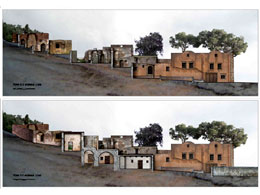
26 March, 2011
New additions to the collateral buildings of holy trinity monastery in Akrotiri, Chania
The Holy Monastery of Agia Triada, is a monastery of the 17th century and one of the most important monuments of the Renaissance in Crete.
Student : Chrysanthi Karpanou
Supervisors : K.Karadimas A, S. Gyftopoulos
National Technical University of Athens
Date : 2010
The Holy Monastery of Agia Triada, is a monastery of the 17th century and one of the most important monuments of the Renaissance in Crete. It is located in Acrotiri, Chania, 16km from Chania and 2km from the airport. Its main feature is that while the layout of its buildings is typical byzantine, with the church in the center and the rest of the buildings around it forming a closed quadrilateral, morphologically it has elements of Mannerism. In fact, for its construction was used the Manual of Architecture of Sebastiano Serlio, which was a model to the architects of the period. The Monastery, flourished during the 18th century, when it also acquired great wealth, and during the second half of the 19th century, when it became a center of education for the area. Today, it functions under a small group of monks, and it's known for its great production of biologic oil and wine, which largely exports abroad, while it receives a great number of visitors.
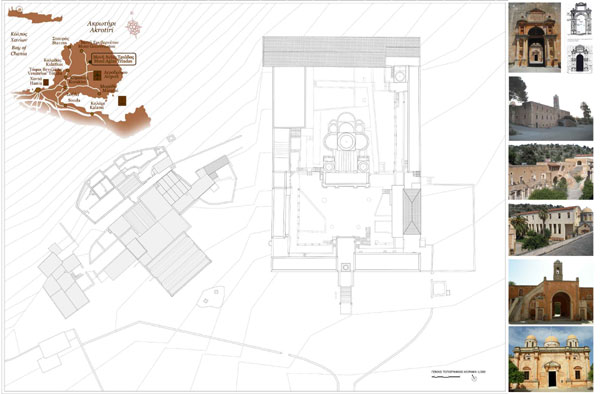
pic. 1, location and general plan, on the right pictures of the monastery
Next to the monastery, in an area with intense inclination, is located a complex of buildings, gradually built from the mid 18th to the end of 19th century. The buildings, adapted to the inclination of the hill, are organized in three groups: the central and most important includes buildings of larger scale, housing the oil mill, built in 1790, and its warehouses. The western block of buildings, built in 1851, was used initially as a house and later as a workshop, while the Northern block, of smaller scale, also used as a house, remains the last years unused and in a very bad shape. Another problem is the fact that those blocks of buildings, even though in a small distance from one another, are not easy to be approached, also the inside space of the central block is so complicated that no one, being there, can have an overview of the whole space.
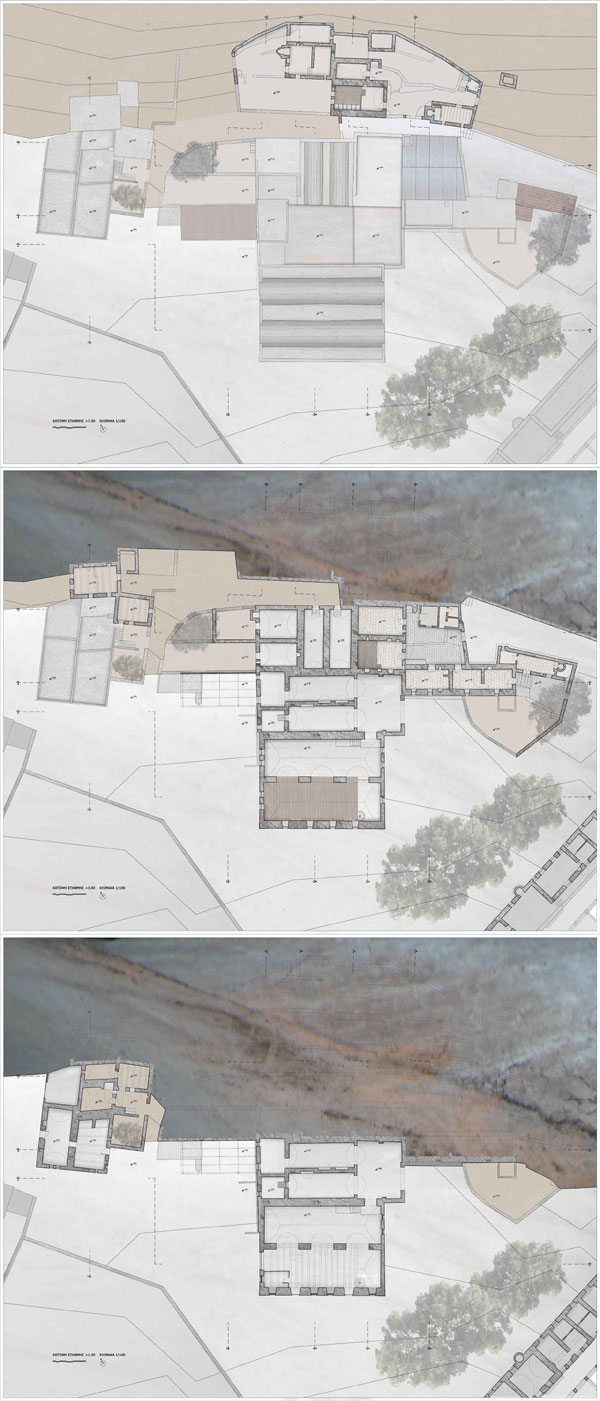
pic. 2, plans of the existing buildings
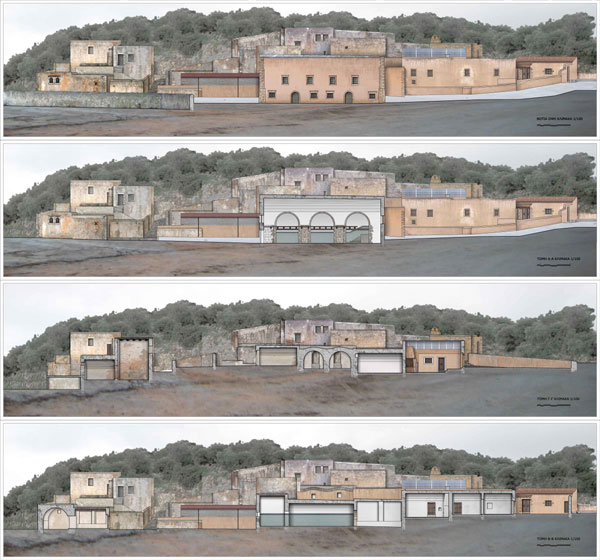
pic. 3, 4 sections of the existing buildings
As a result of the recent relocation of the oil mill in modern units, the buildings can be rehabilitated in a supporting to the monastery way. Their new use is relevant to the monastery production and based on the great number of its visitors. However, there should also be a possibility for those buildings to function independently, as the Monastery is closed to visitors after sunset. So, after the proper measurements and analysis of the buildings, it is proposed a museum of the history and production of the Monastery, on the central block, with two rooms of projection and a museum-shop, while is added a conference hall with capacity of 80 people. The west and most independent complex is used for the administration facilities along with the accountant office of the monastery and at the northern complex which has the greatest view, is located a wine testing hall and a café-restaurant .
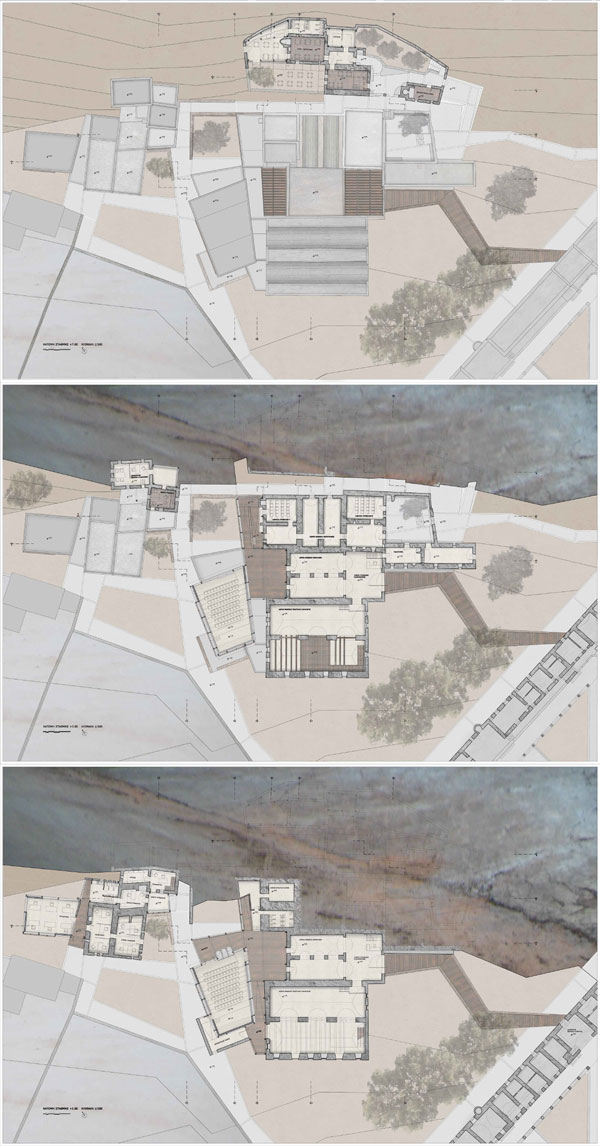
pic. 5, plans of the buildings proposed
The movement inside the block and the groups of uses are organized in zones, parallel to the curves of altitude. An important point is the outdoor space, which is redesigned around the block of buildings, as well as in front of the entrance of the monastery. It is proposed to remove the asphalt which covers it, and to create large areas of soil and plants, and an independed network of routes and combined yards which will lead to the entrances of each group and will unify the three areas of the buildings. The main connection with the Monastery will be through a crooked outdoor movement, which, following the curves of altitude, leads to the passageway of the northern wing.
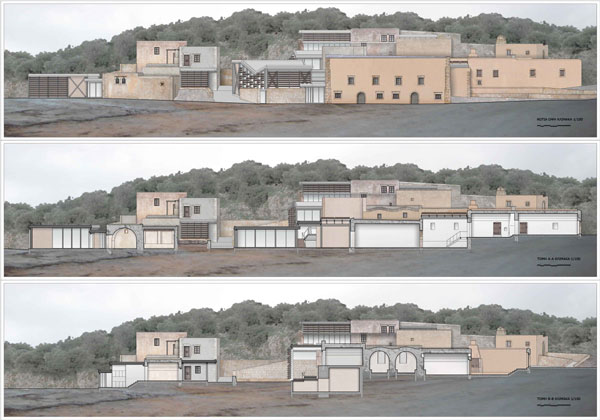
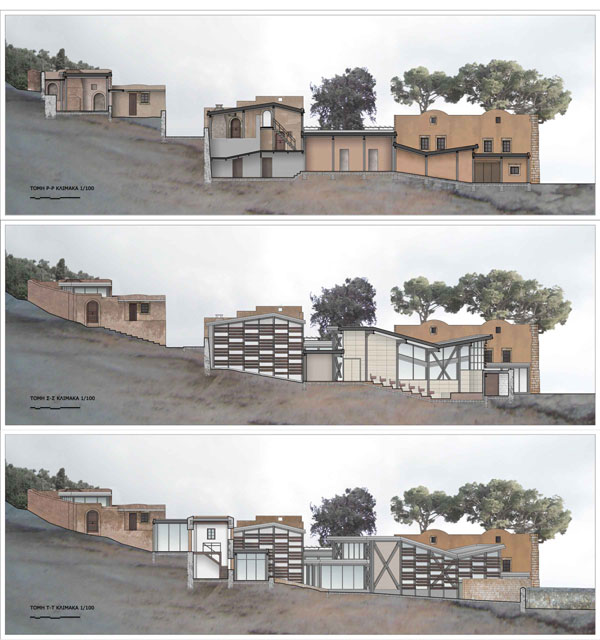
pic. 6, 7 sections of the buildings proposed
The interferences on the existing buildings are the minimum and are indicated from functional criteria. Meanwhile, there are suggested a set of new additions, discrete and unobtrusive, which are placed next to the existing buildings, fitting in their heights and scales, with no intention to dominate, but at the same time maintaining their structural and morphological autonomy. The majority of the additions are located between the central and the western block, with the intention to be far from the Monastery, respecting its history, and not directly visible from it. With the configuration of the courtyard at this point, is created a new center on the complex, which receives movements from all of its three sides. For the new additions, which aim to differentiate from the existing buildings on both their alignments and their form, is chosen to be used a metal structure, which is studied in detail and is structurally solved on the mail complex, while on the formation of the facades is intended transparency, with the necessary sun protection.
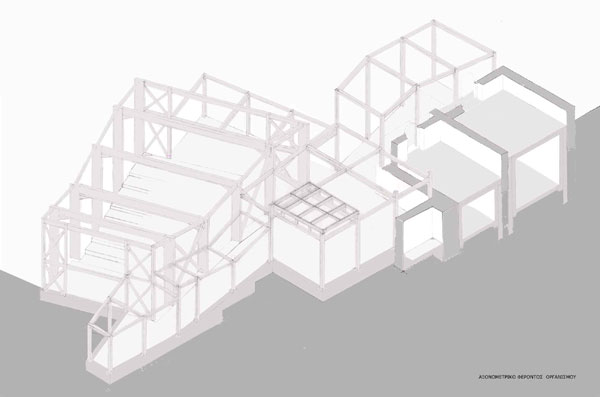
pic. 8, axonometric view of the proposed metal structure
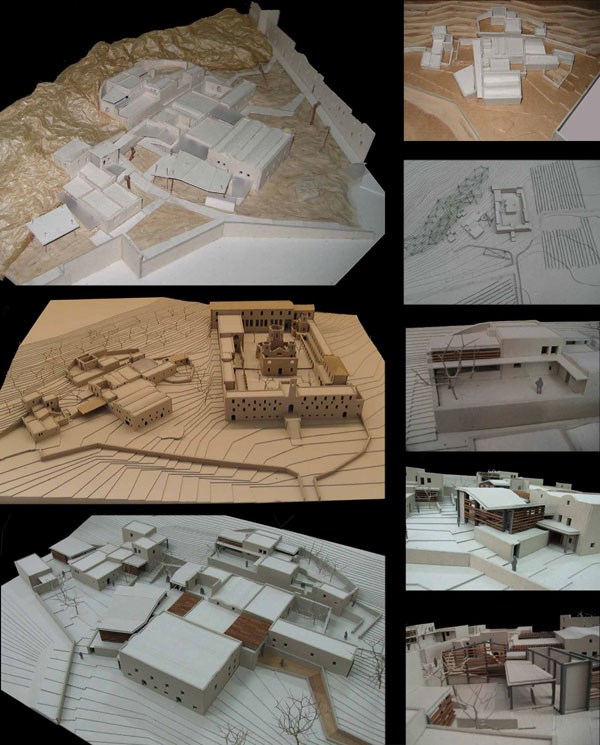
pic. 9, photos of models
For the color edit of the presented plans, the corresponding photos of the buildings have been used, appropriately edited in order to render in detail the pathology of the buildings and the texture of materials, existing and proposed, both in measurement and proposal plans.
This diploma project was based on a research made in the 9th semester named «structural analysis of the Holy trinity Monastery in Akrotiri, Chania» in which the history of the Monastery is presented, as it is related to the wider social and political environment in Crete. Each wing of the monastery is properly measured and analysed separately and a number of conclusions are made that are related to the general position of the buildings, their highly professional construction and their incorporation to the wider environment.
Related articles:
- “Complejo Parroquial de la Ascension del Senor” ( 03 January, 2011 )
- Harajuku church ( 30 June, 2015 )
- Chapel at Murcia ( 25 January, 2012 )
- Travassos Chapel – Loureiro, Peso da Régua ( 09 April, 2012 )
- New Monastery in Zaltsa, Viotia ( 07 April, 2012 )
- The Carmelite Chapel of Montreal ( 30 June, 2013 )










